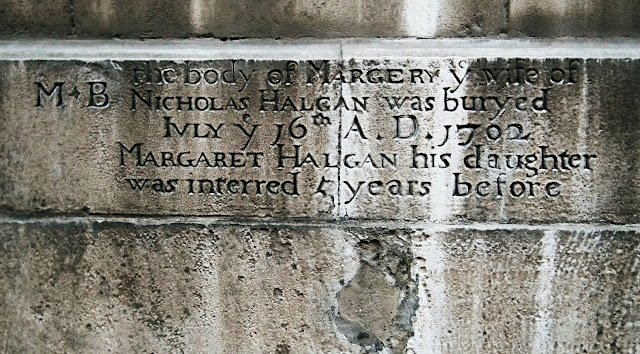I
don’t recall ever having seen this before – a grave inscription carved into the
exterior wall of the church rather than on a headstone. There are just two at
St Brides, one dated 1686, the other 1702, both inscribed shortly after Sir
Christopher Wren’s church was completed in 1672. Perhaps the church authorities
discouraged others from following the example set by the relatives of Samuell
Langby after Nicholas Halgan buried his wife Margery here in 1702 and chose to
remember his daughter Margaret, buried five years previously, as well as his
spouse. Paying a mason to chisel a short inscription into the church wall would
have been much cheaper than paying for a headstone and I’m sure the practice would
have caught on if churches had allowed it. Both inscriptions date from around the start
of the graveyard memorial boom. Before the 17th century monuments and memorials
for the dead were reserved only for the rich and powerful but in the late 1600’s
marking burial place with something more durable than a simple wooden cross
caught on amongst the middle classes. Carved and inscribed gravestones became a
common sight in church yards for the first time.
 |
| Margery and Margaret, the Halgan ladies immortalised. The capital M&B to the side of the inscription are probably graffiti. |


No comments:
Post a Comment